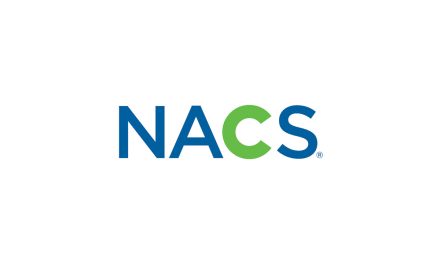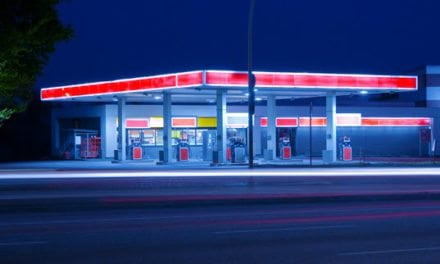By Nick East, Zynstra, an NCR Company
As convenience stores battled on the frontlines of the COVID-19 pandemic from day one, key technological pain points began to surface among IT managers and directors. We recently commissioned a survey through Censuswide that polled c-store retailers across North America to identify how technology priorities have shifted amidst the pandemic.
Many found themselves without the proper tools in place to quickly pivot their operations to meet both CDC guidelines and consumer demands. Priorities such as the implementation of mobile technology to deliver advanced customer experience features including self-checkout, mobile payment applications and more, were obstructed by legacy technology. Additionally, the rapid changes in consumer buying habits due to social distancing, such as curbside collection, full-service fueling, click & collect, grab & go and more, continue to place pressure on c-stores.
However, c-stores faced technological challenges even before COVID-19. A c-store retailer survey conducted back in 2019 demonstrated that the majority of retailers at that time faced IT barriers when trying to improve their store’s footprints:
- 96% of c-store directors and IT managers agreed that if it was easier to implement new applications and services, they would do so more often.
- Only 49% of respondents said their current store IT infrastructure was an engine for innovation and delivering new in-store customer experiences.
C-stores were also facing an uphill battle prior to the pandemic, due to rising labor costs coupled with infrastructure, support and maintenance costs continuing to eat into their operational efficiency. Today, the coronavirus pandemic has merely highlighted many of the technology obstacles c-stores have toggled with for years and accelerated the need for change.
Lessons Learned
The latest survey identified the most critical technology lessons c-stores have learned during this time. Most notably, 63% of respondents identified that legacy infrastructure held them back from making changes, responding that an inflexible infrastructure delayed the speed at which they would have liked to adapt their store operations. Additional takeaway lessons the survey identified included;
Technology is front and center
81% of c-store retailers said COVID-19 has elevated the role IT plays in the eyes of C-level decision makers, with 100% of c-store retailers with 500+ stores identifying this as a new reality. In addition, 64% of survey respondents identified they need to adapt their technology to keep up with newly formed consumer behaviors.
Mobile checkout technology is a must, but legacy tech poses barriers
C-stores are understanding that the demand for new checkout options is rampant across the customer landscape. Especially during the pandemic, shoppers want to ensure they receive their products in a fast, easy and safe manner. The only way to make this possible is by updating legacy retail systems and embracing transformation at checkout. Those that do not offer more flexible checkout options to their customers stand to lose market share to the competition. This same survey showcased how 77% of c-stores are looking into touchless checkout and 81% are looking at self-checkout as important for their future.
As these frictionless checkout options become a key priority in the c-store space, retailers will have to find a way past their legacy infrastructure and find a way to mitigate their cost structure as they implement new store technology to meet the demand of new customer buying habits. Speed to market now is paramount.
POS as the foundation for change
As c-stores continue to review their IT ecosystem and plan for the future, they are recognizing that change begins with their POS infrastructure. However, with the rapid changes in customer buying habits, they want to invest in technology that gives them maximum flexibility in the long term. Only 10% of respondents say they have the exact POS infrastructure that will serve the business now and, in the future. On the other hand, 29% seek a solution that will keep their legacy POS running with minimal cost while they examine how checkout needs will evolve and 25% want to refresh their POS now but are concerned the investment may have to be repeated again as consumer purchasing habits continue to change.
Delivering a new level of convenience
The value of convenience has never been higher. The impact of COVID-19 will mean c-stores must find a way to evolve their cost structure as inevitably costs are going to rise. By minimizing touchpoints through technology, c-stores can make the buying process more seamless while letting customers know they can be trusted with their health and safety. In order to fulfill this promise, serve and remain relevant, c-stores will need to continue to adapt their store technology, and fast.
 Nick East is the CEO of Zynstra, an NCR Company that enables retailers to deliver superior customer and employee experiences through faster innovation and radically reduces cost to serve in-store. Purpose built for the edge, its software optimizes existing store technology and enables digital transformation. Zynstra virtualizes back and front office store technology, with intelligent automation to deliver software defined stores .Zynstra delivers its patented retail edge software for the world’s largest, most distributed, innovation-driven enterprises.
Nick East is the CEO of Zynstra, an NCR Company that enables retailers to deliver superior customer and employee experiences through faster innovation and radically reduces cost to serve in-store. Purpose built for the edge, its software optimizes existing store technology and enables digital transformation. Zynstra virtualizes back and front office store technology, with intelligent automation to deliver software defined stores .Zynstra delivers its patented retail edge software for the world’s largest, most distributed, innovation-driven enterprises.









